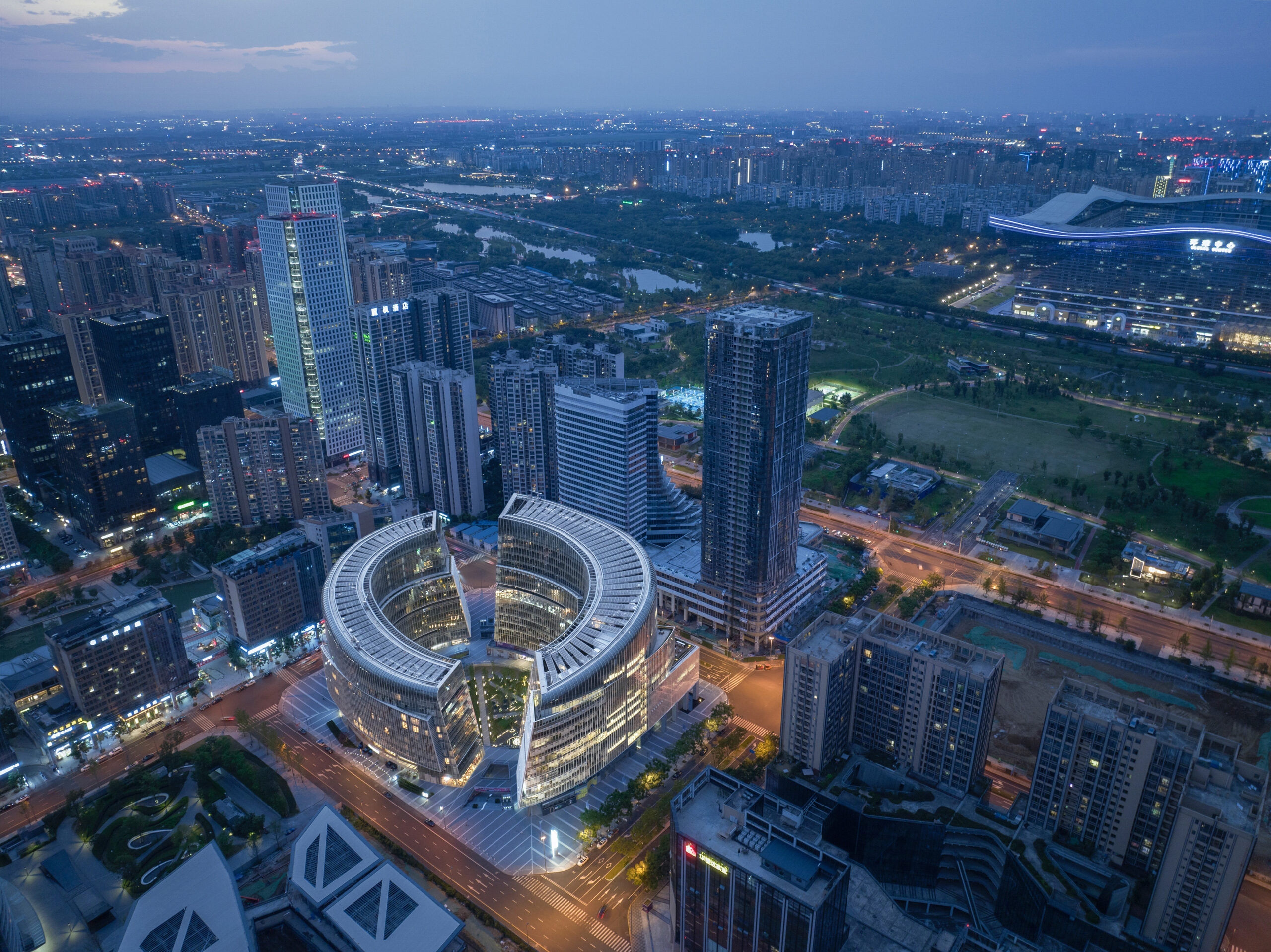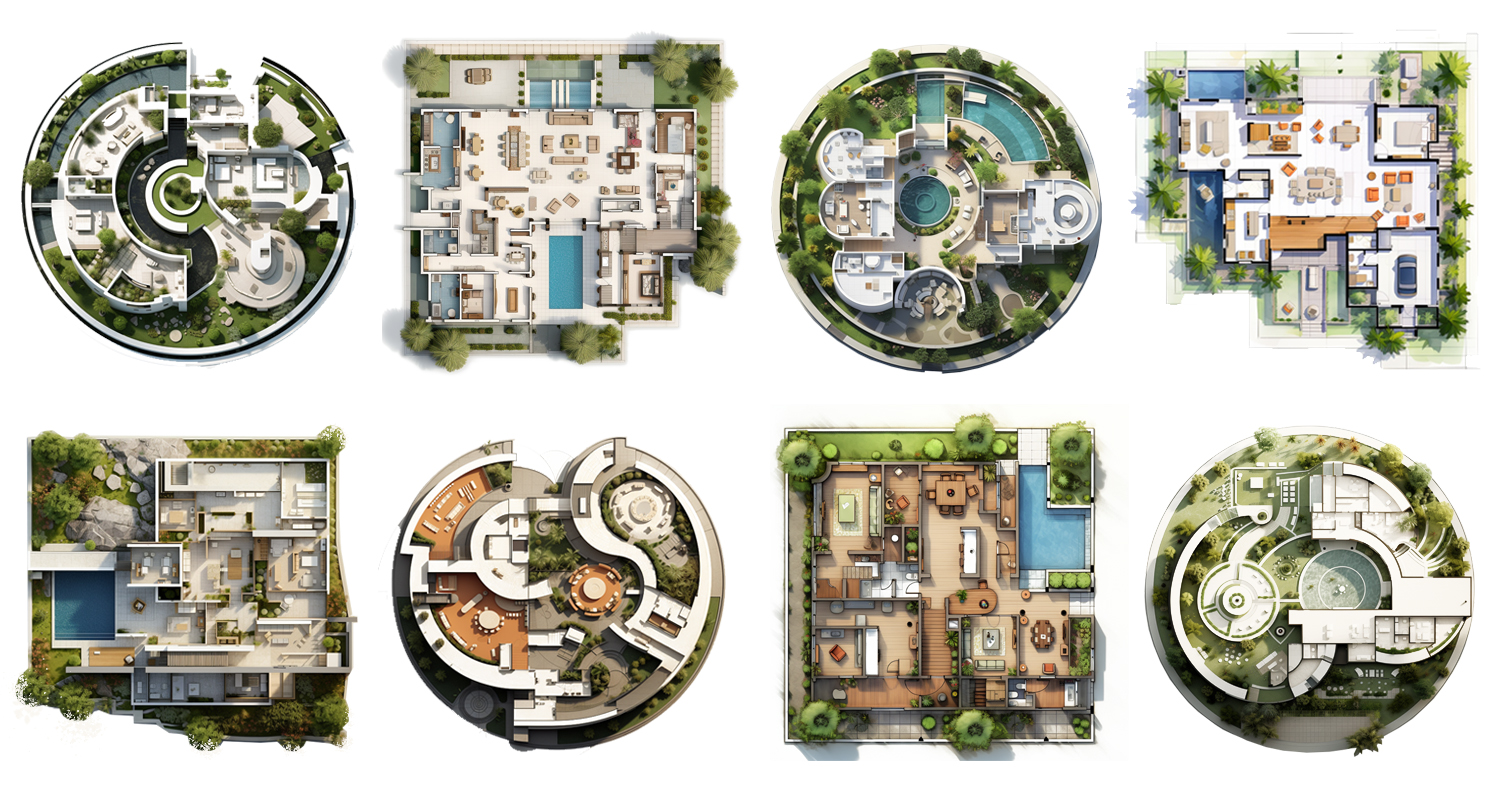Architizer is thrilled to reveal the 12th Annual A+Awards Finalists. See which projects and firms made the cut and have your say in who wins a coveted Popular Choice A+Award. Cast your vote today >
With the increasing challenges of climate change, rapid urbanization and resource scarcity, our urban environments are under more pressure than ever. Events such as flooding, heatwaves, earthquakes and sea-level rise are becoming more common, and architects around the globe are rushing to develop new and innovative ways to counter the problems.
Harnessing Genetic Algorithms (GAs), a technology inspired by Darwin’s theory of evolution, is a bold new approach to designing resilient and adaptable cities.
Developed initially in the 1960s by John Holland, Genetic Algorithms have evolved from optimizing jet engine designs to a tool reshaping computational design and architecture. These algorithms harness Darwin’s evolutionary strategies, such as survival of the fittest, mutation and crossover, offering a transformative approach to surmounting urban challenges.

OCT Bao’an OH BAY by LAGUARDA.LOW ARCHITECTS,Shenzhen, China. Photograph by Yanlong Tong Popular Choice Winner, 11th Annual A+Awards, Landscape & Planning, Urban & Masterplan
The process begins with generating a diverse population of potential designs, each encoded as if it were a ‘chromosome’. The ‘chromosome’ represents a suite of design variables, including spatial configurations, material properties, site properties, population statistics, future variables or even desired design features. These various solutions are then rigorously assessed through a fitness function, which evaluates their efficacy against a spectrum of criteria such as structural efficiency, aesthetic appeal, sustainability, cost or build restraints.
Much like DNA and evolution in nature, the process meticulously selects and refines each design solution, suggesting adaptions as it progresses. The “fittest” among them are chosen to reproduce, thereby transmitting their superior traits to successive generations. Crossover, the process of combining elements from different ‘parent’ designs, creates new, hybrid solutions. Meanwhile, mutation introduces a touch of randomness, injecting novel traits to help diversify the design possibilities.
Through repeated cycles of design, evaluation, selection, crossover and mutation, Genetic Algorithms steer the solution pool toward an optimal design outcome. Mirroring nature’s own strategy of evolving organisms to adapt and flourish. Commonly, GAs develop designs and strategies that have not previously been explored, opening up new avenues of design thinking.

Chengdu Co-Innovation and Cooperation Center by LAGUARDA.LOW ARCHITECTS, Chengdu, China | Photograph by Arch-exist photography | Popular Choice Winner, 11th Annual A+Awards, Office – High Rise (16+ Floors)
At an individual structure level, the role of Genetic Algorithms is unparalleled. They can navigate complex trade-offs in structural design, such as maximizing strength while minimizing weight and material use, by simulating and evaluating numerous design iterations. They can optimize the placement, sizing and orientation of structural elements like beams, columns and trusses. They are often integrated with Finite Element Analysis software for simulating structural responses under various loads and conditions.
In addressing environmental challenges and sustainability in architecture, Genetic Algorithms can hugely increase building performance. By optimizing building designs for natural ventilation, solar gain and thermal insulation based on local climatic conditions, the structures proposed are inherently more in tune with their environment and can weigh up one environmentally positive decision against another to highlight the best choice for the individual project.
The same is true for material optimization. GAs assist in selecting suitable materials for different parts of a structure and carefully allocating them to meet the design and performance criteria. Comparing cost, longevity and environmental impact, amongst other factors.
However, the impact of GAs in architecture extends far beyond increased efficiency and lowered building costs. Part of the strength of Genetic Algorithms lies in generating solutions that are aligned with context and that are adaptable. Meaning buildings and spaces that seamlessly blend visual appeal alongside function, environmental consciousness, and societal positivity to generate long-term solutions in an ever-changing world.
Genetic Algorithms can handle multi-objective challenges and are adept at juggling diverse and often conflicting requirements, crafting solutions that achieve a delicate equilibrium among them. You can include multiple scenarios across decades, centuries even, to find the optimum result. When we are designing on an urban landscape scale, this foresight can prove invaluable.

Avon Lake Renewable Master Plan by Gensler, Avon Lake, Ohio | Jury Winner, 11th Annual A+Awards, Urban & Masterplan.
GAs can support the relationship between structures and their surrounding landscapes, enhancing biodiversity and minimizing environmental disturbance. They aid in optimizing the use of resources like water and energy, leading to designs that minimize consumption and waste during construction and throughout their lifespan. Considering the impact of renewable energy sources and maximizing the design for effectiveness and future technological developments.
Genetic Algorithms offer a data-driven lens for urban planning. By analyzing extensive datasets, they can propose city layouts optimized for efficiency, sustainability and livability. When combined with Geographic Information Systems, GAs allow planners to leverage data that considers geographical, topographical and demographic factors in urban planning decisions. Real-time data can be used to facilitate dynamic planning, allowing cities to adapt quickly to changing circumstances. Fortifying them from external factors while ensuring an optimal solution that supports thriving and prosperous communities in fairer and safer cities.
There are a few downsides to the adoption of Genetic Algorithms; however, some do exist. Like many complex digital calculations, GAs can be computationally demanding, requiring significant processing power, and while it is unlikely that this will remain a concern for a long time, currently, it is an environmental factor that must be considered. Additionally, at this moment, the time taken for GAs to find an optimal solution can be substantial; many clients or owners are yet to be convinced of the value added versus the time added to projects, which often results in increased project costs.

Deji Plaza Xuzhou by LMCA Design, Xuzhou, China | Popular Choice Winner, 11th Annual A+Awards, Urban & Masterplan.
Mostly, some critics feel there’s a risk of architects relying too heavily on Genetic Algorithms, potentially overlooking the human-centric, emotion-driven and artistic expression of architecture. The output quality of any GA lies in the quality and comprehensiveness of input data. When the project is data-scarce or where data used is skewed to be favorable to one outcome or potentially to benefit a particular arm of society over any other, the proposals could lead to enhanced marginalization rather than inclusivity and benefits for all.
The challenges and limitations associated with the use of Genetic Algorithms in architecture are serious, yet they are not insurmountable. The responsibilities to ensure the best outcomes are being adopted lie with the architect and the planners, those with the experience and knowledge to ensure that inclusive data and a desire for fair outcomes lead the design decision-making. By addressing computational, data quality and ethical considerations and by ensuring that GAs are used as a tool to augment, not replace, human expertise and decision-making, the architecture industry can harness the full potential of this technology. A balanced approach that combines technological innovation with human-centric design principles will be crucial for the future development of the built environment.
Architizer is thrilled to reveal the 12th Annual A+Awards Finalists. See which projects and firms made the cut and have your say in who wins a coveted Popular Choice A+Award. Cast your vote today >






 Gensler
Gensler 


